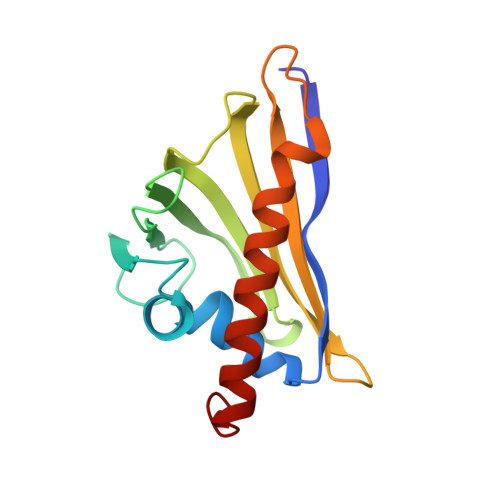Halostachys caspica pathogenesis-related protein 10 acts as a cytokinin reservoir to regulate plant growth and development.
Feng, Y., Ren, Y., Zhang, H., Heng, Y., Wang, Z., Wang, Y.(2023) Front Plant Sci 14: 1116985-1116985
- PubMed: 37180382
- DOI: https://doi.org/10.3389/fpls.2023.1116985
- Primary Citation of Related Structures:
8H3I, 8H3J - PubMed Abstract:
Pathogenesis-related class 10 (PR-10) proteins play a role in plant growth and development, but the underlying molecular mechanisms are unclear. Here, we isolated a salt-induced PR-10 gene from the halophyte Halostachys caspica and named it HcPR10 . HcPR10 was constitutively expressed during development and HcPR10 localized to the nucleus and cytoplasm. HcPR10-mediated phenotypes including bolting, earlier flowering, increased branch number and siliques per plant are highly correlated with increased cytokinin levels in transgenic Arabidopsis. Meanwhile, increased levels of cytokinin in plants is temporally correlated with HcPR10 expression patterns. Although the expression of cytokinin biosynthesis genes validated was not upregulated, cytokinin-related genes including chloroplast-related genes, cytokinin metabolism and cytokinin responses genes and flowering-related genes were significantly upregulated in the transgenic Arabidopsis compared to the wild type by transcriptome deep sequencing. Analysis of the crystal structure of HcPR10 revealed a trans -zeatin riboside (a type of cytokinin) located deep in its cavity, with a conserved conformation and protein-ligand interactions, supporting HcRP10 acts as a cytokinin reservoir. Moreover, HcPR10 in Halostachys caspica predominantly accumulated in vascular tissue, the site of long-distance translocation of plant hormones. Collectively, we draw that HcPR10 as a cytokinin reservoir induces cytokinin-related signal transduction in plants, thereby promoting plant growth and development. These findings could provide intriguing insights into the role of HcPR10 proteins in phytohormone regulation in plants and advance our understanding of cytokinin-mediated plant development and could facilitate the breeding of transgenic crops with earlier mature, higher yielding agronomic traits.
- Xinjiang Key Laboratory of Biological Resources and Genetic Engineering, College of Life Science and Technology, Xinjiang University, Urumqi, China.
Organizational Affiliation:

















